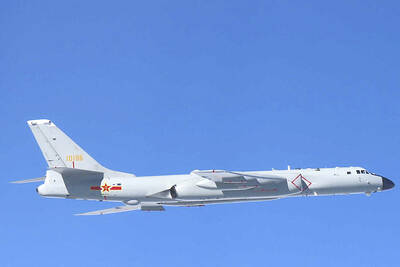Malaysia is deploying helicopters, boats and an aircraft along its coast to catch a rising number of suspected illegal immigrants from Afghanistan and Pakistan who attempt to reach Indonesia by boat despite the risk of drowning on the perilous journey.
The immigrants use Malaysia as a stepping stone, taking small, overcrowded boats to Indonesia, usually with the goal of reaching Australia and applying for asylum, officials said this week.
Many Indonesians who work in Malaysia without permits or overstay their visas also use the boats to get home.
Since March, four boats with 114 Indonesians, 58 Afghans, 37 Pakistanis and three Iraqis have been caught trying to cross from Malaysia to Indonesia, data from the marine police and the Malaysian Maritime Enforcement Agency said. A request for interviews with the detainees is being processed.
Maritime officials say it is hard to estimate how many have successfully completed the dangerous passage.
“This is a new trend to us in Malaysia,” Malaysian Home Ministry Secretary-General Mahmood Adam said.
The prospective migrants are believed to pay human traffickers in their home countries, who arrange for them to come to Malaysia on valid tourist visas. Once here, they see the sights in Kuala Lumpur and surrounding areas before setting sail on an uncertain journey.
Mahmood said most of these people are middle-class with means to fund their journey. Many want to escape the war in Afghanistan and in Pakistan’s border region and all are looking for a better life.
“They have money. They travel all over the world. So how to refuse their visa application? It’s very difficult,” Mahmood said.
In late April, a boat carrying a Pakistani family overturned and only a 14-year-old boy survived. All six family members including his mother, siblings and uncles drowned.
The Pakistani embassy said the family — in Malaysia on tourist visas — was on a legitimate pleasure boat trip, but police are investigating whether they paid smugglers to take them to Indonesia.
Early on Thursday, two boats with 32 illegal Indonesian immigrants capsized in choppy waters off southern Johor state, leaving one woman dead and nine missing, Johor marine police chief Mohamad Khamsani Abdul Rahman said. Twenty-two others, including a suspected boatman, were rescued.
A third boat sank last month, killing eight Indonesians.
First Admiral Ahmad Puzi Abdul Kahar of the Malaysian Maritime Enforcement Agency said coastline surveillance was stepped up after the first tragedy in March.
He said an aircraft, helicopters and boats patrol the coast, and officers from all agencies are gathering information from fishermen and other locals about illegal vessels.
For now the human trafficking syndicates seem to have been intimidated and their activities have decreased, but policing Malaysia’s 1,727km-long coastline is difficult.
“When you tighten here, they will go to the other side ... Of course we have to tighten [security] everywhere,” Ahmad Puzi said.
On May 28, a wooden boat packed with Afghan migrants sank off western Indonesia, killing at least nine people and leaving 11 missing. The Afghans, who were rescued, told Indonesian authorities they flew from Afghanistan to Malaysia, where human traffickers offered to help them get to Australia.
Captain M. Karunanithi, a senior official with the Malaysian maritime agency’s crime investigation department, said the migrant flow increased when Australia eased immigration restrictions last year.
He said among the Pakistanis and Afghanis arrested in Malaysia were two doctors and an information technology specialist, and many carried between US$3,500 and US$4,000 in cash. Some told their interrogators they had relatives in Australia, Karunanithi said.
Those arrested have been jailed up to six months for exiting Malaysia illegally before being deported, he said.

PARLIAMENT CHAOS: Police forcibly removed Brazilian Deputy Glauber Braga after he called the legislation part of a ‘coup offensive’ and occupied the speaker’s chair Brazil’s lower house of Congress early yesterday approved a bill that could slash former Brazilian president Jair Bolsonaro’s prison sentence for plotting a coup, after efforts by a lawmaker to disrupt the proceedings sparked chaos in parliament. Bolsonaro has been serving a 27-year term since last month after his conviction for a scheme to stop Brazilian President Luiz Inacio Lula da Silva from taking office after the 2022 election. Lawmakers had been discussing a bill that would significantly reduce sentences for several crimes, including attempting a coup d’etat — opening up the prospect that Bolsonaro, 70, could have his sentence cut to

China yesterday held a low-key memorial ceremony for the 1937 Nanjing Massacre, with Chinese President Xi Jinping (習近平) not attending, despite a diplomatic crisis between Beijing and Tokyo over Taiwan. Beijing has raged at Tokyo since Japanese Prime Minister Sanae Takaichi last month said that a hypothetical Chinese attack on Taiwan could trigger a military response from Japan. China and Japan have long sparred over their painful history. China consistently reminds its people of the 1937 Nanjing Massacre, in which it says Japanese troops killed 300,000 people in what was then its capital. A post-World War II Allied tribunal put the death toll

‘UNWAVERING ALLIANCE’: The US Department of State said that China’s actions during military drills with Russia were not conducive to regional peace and stability The US on Tuesday criticized China over alleged radar deployments against Japanese military aircraft during a training exercise last week, while Tokyo and Seoul yesterday scrambled jets after Chinese and Russian military aircraft conducted joint patrols near the two countries. The incidents came after Japanese Prime Minister Sanae Takaichi triggered a dispute with Beijing last month with her remarks on how Tokyo might react to a hypothetical Chinese attack on Taiwan. “China’s actions are not conducive to regional peace and stability,” a US Department of State spokesperson said late on Tuesday, referring to the radar incident. “The US-Japan alliance is stronger and more

FALLEN: The nine soldiers who were killed while carrying out combat and engineering tasks in Russia were given the title of Hero of the Democratic People’s Republic of Korea North Korean leader Kim Jong-un attended a welcoming ceremony for an army engineering unit that had returned home after carrying out duties in Russia, North Korean state media KCNA reported on Saturday. In a speech carried by KCNA, Kim praised officers and soldiers of the 528th Regiment of Engineers of the Korean People’s Army (KPA) for “heroic” conduct and “mass heroism” in fulfilling orders issued by the ruling Workers’ Party of Korea during a 120-day overseas deployment. Video footage released by North Korea showed uniformed soldiers disembarking from an aircraft, Kim hugging a soldier seated in a wheelchair, and soldiers and officials